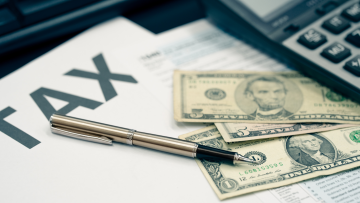Are you approaching retirement age but not quite ready to step away from your career completely? A phased retirement plan might be the ideal solution for you.
This innovative approach is increasingly popular among those who are not fully prepared to leave the workforce. But what exactly is a phased retirement, and is it something you should consider implementing?
Understanding Phased Retirement Planning
A phased retirement is a flexible work arrangement that caters to individuals nearing retirement age. It allows you to gradually reduce your working hours, transitioning smoothly from full-time employment to complete retirement. The Society for Human Resource Management (SHRM) shows that about 29% of U.S. workers aged 61 to 66 are considering a phased approach to retirement, indicating a significant shift of interest in this flexible arrangement.
This retirement strategy encompasses both pre-retirement and post-retirement phases. During the pre-retirement phase, you’ll experience a gradual reduction in work hours, while post-retirement may involve part-time work. Options like part-time, seasonal, temporary work or job-sharing are all viable under a phased retirement plan. Let’s explore some insider insights, along with the advantages and challenges this approach presents.
Advantages and Challenges of a Phased Retirement
Transitioning to retirement is a significant life change. As you near retirement, you may be looking forward to taking your foot off the throttle to enjoy a more relaxing lifestyle. You may want to spend more time doing the things you love, like hobbies, holidays and enjoying time with family and friends.
But, at the same time, you might not be ready to give up work entirely. This could be for financial reasons, or you may be feeling apprehensive about what a life without work will look like for you.
If this sounds familiar, you might want to consider a phased retirement.
Working beyond the traditional retirement age is becoming more common as life expectancies increase and pension plans become less prevalent. Phased retirement can alleviate financial pressure, enabling a smoother transition from earning a full income to relying on your nest egg.
From an employer’s perspective, phased retirements help retain skilled older workers, facilitates the training of new employees by experienced staff, and aids in future workforce planning. However, if you opt for a phased retirement, you’ll need to be able to cope financially with a reduced salary. Hopefully, your nest egg will help compensate for your reduced earnings, but you will still have to cover the costs of commuting, alongside other typical work-related costs.
There could also be some reluctance from your employer. For example, they may be put off by the cost of maintaining your employee benefits, such as death in service insurance and private health cover, which may become increasingly expensive compared to what it would be for a younger employee.
Step-by-Step Approach to Phased Retirement
Still think a phased retirement is the right strategy for you? Here are 6 best practices and steps to get you started:
- Assess Your Financial Situation: Before transitioning into phased retirement, it’s crucial to have a clear understanding of your financial landscape. Evaluate your savings, debts, expenses, and investment portfolio. This assessment will form the foundation of your phased retirement plan.
- Determine Your Income Needs: Estimate the income required to maintain your desired lifestyle during phased retirement. Consider how your expenses might change as you transition from full-time work to part-time and eventually to full retirement.
- Explore Health Insurance Options: As you reduce your working hours, your employer-provided health insurance may change. Explore options such as private insurance, or Medicare, depending on your age and eligibility.
- Maximize Retirement Benefits: Understand how phased retirement will affect your pension, 401(k), or other retirement plans. Consider the timing of withdrawals and how it aligns with your income needs and tax implications.
- Engage in Estate Planning: Ensure your estate plans are updated to reflect your current wishes. This includes wills, trusts, and healthcare directives.
- Stay Flexible: The journey through phased retirement can bring unexpected changes. Maintain flexibility in your plan to adapt to life’s unforeseen events.
Phased Retirement and Social Security
Choosing to work part-time can delay the need to start collecting Social Security benefits. While many opt for reduced benefits at age 62, full benefits are available from age 67. Delaying Social Security until age 70 increases the benefit amount significantly.
With longevity more prevalent than ever before, even with a phased retirement plan, it’s crucial to ensure your savings last through a potentially lengthy full retirement period.
Final Thoughts
A phased retirement is when an employee transitions into retirement by gradually reducing their working hours. It means they can continue to earn an income while slowly adjusting to stopping work altogether.
Planning your phased retirement with a trustworthy financial advisor is essential. Advisors can evaluate the impact of such a plan and suggest alternatives if necessary. At CKS Summit Group, we craft innovative retirement income strategies tailored to your unique needs.
Ready to take the first step towards a worry-free retirement? Contact us today to explore whether an early, phased, or traditional retirement strategy aligns best with your goals and financial situation.



